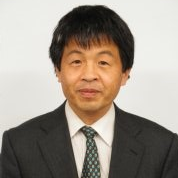High-Efficiency Conversion in Renewable Energy, Challenge, or Reflection
A special issue of Applied Sciences (ISSN 2076-3417). This special issue belongs to the section "Energy Science and Technology".
Deadline for manuscript submissions: closed (31 January 2021) | Viewed by 56139
Special Issue Editor
Interests: automobile and transportation by renewable energy; solar energy; solar cell; CPV; standardization
Special Issues, Collections and Topics in MDPI journals
Special Issue Information
Dear Colleagues,
The R&D for renewable energy will accelerate the reduction of greenhouse gas emissions. High-efficiency power or energy conversion is the typical research target. However, it is also known through field experience that the system that wins the efficiency-race does not always perform the best in the real world. We may find that there are several reasons for this. Some are strong scientific reasons, and others are constrained by realistic compromise. In any case, positive or negative, it is worthwhile to collect arguments about the myths, scientific analyses, and field experience of the efficiency-oriented renewable energy technologies. This Special Issue was intended to collect such articles, as well as editorials and reviews of renewable energy technologies, in order to spark up debate. We welcome both positive and negative contributions, however they should be based on science.
In this Special Issue, we are interested in a wide range of discussions about the conversion efficiency of renewable energy from theoretical analyses, simulations, economic calculations, system demonstrations, and field experience. We welcome every kind of renewable energy as well as the application of renewable energy, such as the energy source of vehicles and digital commerce in renewable energy.
Dr. Kenji Araki
Guest Editor
Manuscript Submission Information
Manuscripts should be submitted online at www.mdpi.com by registering and logging in to this website. Once you are registered, click here to go to the submission form. Manuscripts can be submitted until the deadline. All submissions that pass pre-check are peer-reviewed. Accepted papers will be published continuously in the journal (as soon as accepted) and will be listed together on the special issue website. Research articles, review articles as well as short communications are invited. For planned papers, a title and short abstract (about 100 words) can be sent to the Editorial Office for announcement on this website.
Submitted manuscripts should not have been published previously, nor be under consideration for publication elsewhere (except conference proceedings papers). All manuscripts are thoroughly refereed through a single-blind peer-review process. A guide for authors and other relevant information for submission of manuscripts is available on the Instructions for Authors page. Applied Sciences is an international peer-reviewed open access semimonthly journal published by MDPI.
Please visit the Instructions for Authors page before submitting a manuscript. The Article Processing Charge (APC) for publication in this open access journal is 2400 CHF (Swiss Francs). Submitted papers should be well formatted and use good English. Authors may use MDPI's English editing service prior to publication or during author revisions.





